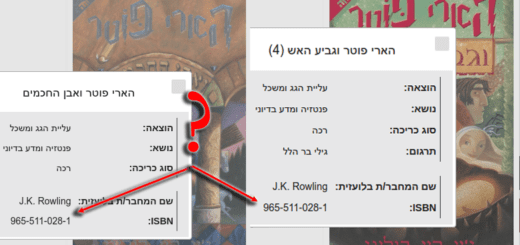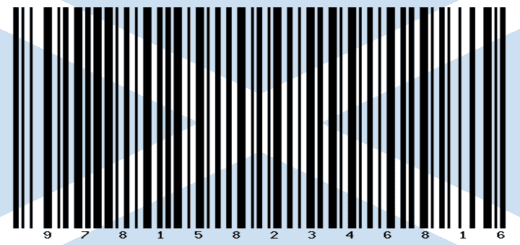 Little Spanish Update
Little Spanish Update
This is less article and more documentation of my rationale behind a conclusion I recently came to.
Recall that the first Spanish publisher was Emecé in Argentina, from which it’s small subsidiary European office sloughed-off along with the Harry Potter publishing rights, becoming Salamandra.
There were a total of seven editions/ISBNs that my records indicated were published under Emecé’s name.
- 978-950-04-1957-4 – SCTr1.1998 (the original)
- 978-84-7888-445-2 – EUA1.1999
- 978-84-7888-554-1 – LAA1.2000
- 978-84-7888-561-9 – LAA1.2000
- 978-84-7888-611-1 – SCR1.2000
- 978-84-7888-612-8 – LAA1.2000
- 978-84-7888-613-5 – LAA1.2000
Of these, 4 were also published under Salamandra: 445, 611, 612, 613. I call them the “cross-over” editions for obvious reasons. Emecé > Salamandra transition took place in the fall of 2000 and there is a little quirk with these four editions which all had print-runs in October of 2000. They all have prints that have copyright pages that say Emecé and covers that say Salamandra. Those prints I call the “hybrids”.
There is nothing particularly interesting about these hybrids except that they reflect the history of the publisher. But they make such a nice little set that my OCD (Obsessive Collecting Disorder) kicked in and I decided I would have to have them. But then, why not round it out and get a set of the pre-hybrid Emecé prints and a the post-hybrid Salamandra prints? A total of eleven books—it should be twelve except that the hybrid print of 611-1 was, in fact, the first print of that edition and that is its only basis for inclusion in the Emecé list.
My OCD also decided that I should have a collection of all the Emecé editions.
The original and pre-hybrid 445 are trivial to get. I’ve also gotten all the post-hybrids, three of the four hybrids (missing 445), and 554 as of this writing. That left three of the LAA1.2000s: 561, pre-hybrid 612, and pre-hybrid 613.
Interestingly—particularly because of gap in the ISBN ranges—there is significant overlap in the print dates of these LAA1.2000 books:
| 2000-07 | 554 print 1 | 612 print 1 |
| 2000-08 | 612 print 2(?) | |
| 2000-09 | 554 print 2 561 print 1 | 612 print 2(?) 613 print 1 |
| 2000-10 | 611 print 1 612 print 3 613 print 2 |
I, primarily, was able to get the dates of these from books I had—after about print 7, Emecé started always including the current print number and year-month as well as the first print and its year-month.
I have 554p2, so had those two dates. Someone I know has 561 so I had that print date. I have the hybrids of 611, 612, and 613 which are all 2000-10, and so I also had the dates of their first prints. The only one that was an unknown is 612p2, but it had to be either August or September.
Oddly enough, although I have managed to find (or find photos of or records of) almost every other edition/print, I have not seen hide-nor-hair of 612p1, 612p2 or 613p1…
I was able to get some quite comprehensive data from the Biblioteca Nacional de España (BNE) which includes something called the “Depósito legal” (D/L) number. The D/L is included on all the copyright pages and (for the most part) is unique for every print of a book. By law, in Spain, one book from every print run of a book published in Spain goes to the BNE for the preservation of Spanish knowledge, culture and heritage. It seems to be a pretty common law around the world.
Frustratingly, the BNE’s records don’t actually do a very good job of correlating ISBN, print numbers and D/Ls… they are all pretty much there, but they get aggregated into the same records—it’s actually quite useless… I talked to them about it quite a bit… that’s another story. Point is, their records were not as straight forward as you might expect. I started reassembling those correlations myself based on what I could get from their records, what I had from the copyright pages I’ve collected and some obvious inferences.
The BNE doesn’t have every print—prints are often distributed to other regional national libraries as well. However, it is apparent that the BNE is the priority for receiving particularly first prints. They have 16 of the first 19 prints of 445 in 1999 and 2000. Of all the editions that came out in the early 2000s they have the vast majority of the prints and don’t seem to pass them on to regional libraries until about print 6~8. What is conspicuously missing are 612p1, 612p2, and 613p1.
I don’t think they exist.
I think that when Salamandra went independent, they needed to negotiate new distribution contracts and probably for legal or logistical reasons, that was facilitated by the introduction of unique ISBNs. But because they were ostensibly the same text, I’ll bet someone decided to keep the print numbers contiguous despite the change in ISBN. It helps to add the distribution areas to these ISBNs to see the pattern:
| Mexico | 2000-07 | 554 | 1 |
| Mexico | 2000-09 | 554 | 2 |
| Mexico, Central America | 2000-10 | 612 | 3 |
| Columbia, Ecuador, Peru | 2000-09 | 561 | 1 |
| Columbia, Ecuador, Peru | 2000-10 | 613 | 2 |
| Argentina | 2000-10 | 611 | 1 |
I believe that when the LA adaptations were rolled out and the cut-over happened between the two publishers, 612 became the successor to 554 and 613 became the successor to 561.
One more interesting fact, however, is that 554p1 is not the LAA1.2000 text. It’s actually EUA1.1999. That means that LAA1.2000 first came out in 2000-09 and I have confirmed that 554p2 and 561p1 are both indeed LAA1.2000. Inspecting the D/L numbers (which are purely sequential numbers), 561p1 is 38061 and 554p2 is 39517 meaning that 561p1 was the first appearance of that adaptation.
It makes me wonder, in fact, if there was feedback from the initial release of 554p1 that prompted the adaptation in the first place. We do know that LAA1.2000 was derived from EUA1.1999 and that of the macroeditions that I have deemed ‘significant’ the difference between LAA1.2000 and EUA1.1999 is the smallest… it seems like a plausible origin story.






